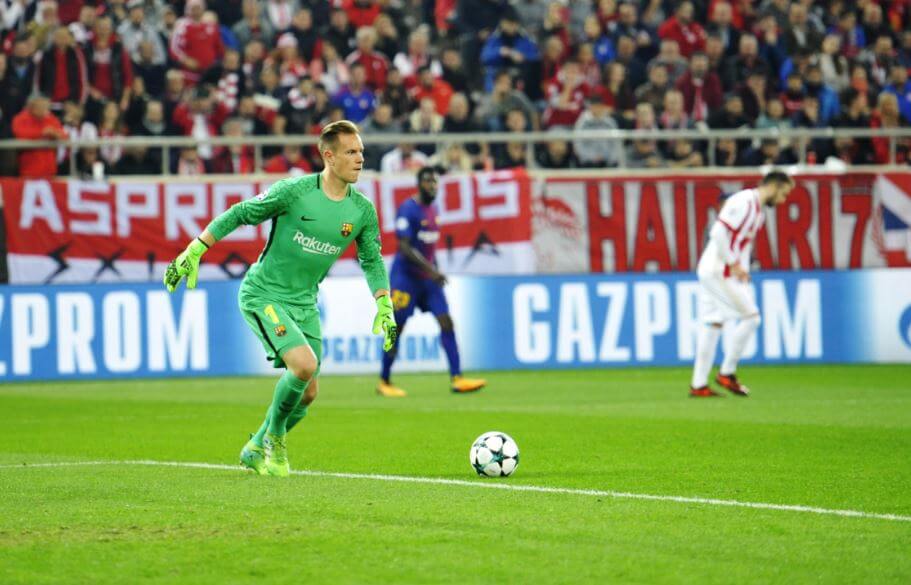Soccer: The Changes of a Game Over Time

Soccer has come a long way from its beginnings in 1863 at a bar in London. In addition, the tactics and preparation for players as well as the coaches and team doctors have also changed the game. Many people would be surprised to know that years ago, the game rules were actually quite different.
The rules of soccer changed for many different reasons. Firstly, it changed as a result of the social and cultural changes that took place since soccer’s beginnings. In the big picture, almost no sport– just as with any other sector in life– is immune to the passing of time.
On a further note, sports evolved to be more entertaining, dynamic as well as easier to understand and play. Ever since television and massive commercial events appeared, soccer also changed and offered a better show to viewers.
Historic changes in soccer rules
It goes without saying that in over nearly 150 years of history, soccer rules have changed. But in our post today, we have a summary of the most surprising changes that clash with modern-day soccer:
Passing to the goalie
Today, if a soccer player passes the ball to the team’s goalie, he or she can only make the pass with his or her feet. In other words, players can’t use their hands in this situation. The only exceptions are if the previous pass was accidental or if the player uses their head or another upper body part.

Until some years ago, the rules were different. Before, if a defense player passed the ball to the goalie, the player could pick up the ball with no problems. The rule changed to prevent teams from picking up the ball to burn time when they were in the lead. The change led to more dynamic games.
The cards
Up until the 1966 England World Cup, red and yellow cards didn’t exist. Instead, referees would orally communicate the sanctions to the players. Not surprisingly, this produced a lot of confusion in international games. As a solution, soccer implemented the system we use today, first starting in the 1970 Mexico World Cup.
Offside, one of the most important soccer rules
When soccer first started, the offside rule applied to every player that surpassed the ball. However, the rule changed a few years later. At the end of the 1860s, it changed again.
Today, players are offside when any of their body parts, excluding their arms, are closer to the opponent’s goal line than both their second-to-last player or the ball.
Tied games
At the end of the 20th century, FIFA created the Golden Goal. The new rule stated that if during the period of extra time played at the end of a tied match, the first team to score a goal is the winner. The Golden Goal came into play in the 2002 Korea-Japan World Cup.
However, the Silver Goal replaced the former rule later on. The Silver Goal has a similar premise but differs in that the teams must play until the end of the period of extra time. But FIFA abolished both rules in 2004 and since then, both halves of extra time are played with no exceptions.
VAR, the peak of modernity in soccer
And of course, we can’t talk about monumental changes in the soccer without mentioning VAR or Video Assistant Referee. VAR is a team of referees that refer to camera footage to review the calls of the head referee in key moments of the game. Furthermore, in certain cases, they can recommend a correction of a call as well.

Most recent changes in the soccer rules
There have been some recent changes in the game. Here are some examples:
- Substitutions: when subbing, players that are leaving the field have to exit by the closest side and not necessarily by passing through the center.
- Dropped-ball: referees will restart the game via dropped-ball after his or her call to stop play. But if the game stops for a non-related motive, the ball will go to the team that last touched the ball.
- Yellow cards for the sidelines: coaches and the players on the bench can now receive a yellow card.
- Fourth substitution: in over-time, both teams can make one final, fourth substitution.
Aside from everything we’ve discussed today, many other elements were added to soccer: goal-kicks, corner-kicks, penalty-kicks, and even referee whistles! They all helped to improve the game, creating the most popular and relevant sport in our world today.
Soccer has come a long way from its beginnings in 1863 at a bar in London. In addition, the tactics and preparation for players as well as the coaches and team doctors have also changed the game. Many people would be surprised to know that years ago, the game rules were actually quite different.
The rules of soccer changed for many different reasons. Firstly, it changed as a result of the social and cultural changes that took place since soccer’s beginnings. In the big picture, almost no sport– just as with any other sector in life– is immune to the passing of time.
On a further note, sports evolved to be more entertaining, dynamic as well as easier to understand and play. Ever since television and massive commercial events appeared, soccer also changed and offered a better show to viewers.
Historic changes in soccer rules
It goes without saying that in over nearly 150 years of history, soccer rules have changed. But in our post today, we have a summary of the most surprising changes that clash with modern-day soccer:
Passing to the goalie
Today, if a soccer player passes the ball to the team’s goalie, he or she can only make the pass with his or her feet. In other words, players can’t use their hands in this situation. The only exceptions are if the previous pass was accidental or if the player uses their head or another upper body part.

Until some years ago, the rules were different. Before, if a defense player passed the ball to the goalie, the player could pick up the ball with no problems. The rule changed to prevent teams from picking up the ball to burn time when they were in the lead. The change led to more dynamic games.
The cards
Up until the 1966 England World Cup, red and yellow cards didn’t exist. Instead, referees would orally communicate the sanctions to the players. Not surprisingly, this produced a lot of confusion in international games. As a solution, soccer implemented the system we use today, first starting in the 1970 Mexico World Cup.
Offside, one of the most important soccer rules
When soccer first started, the offside rule applied to every player that surpassed the ball. However, the rule changed a few years later. At the end of the 1860s, it changed again.
Today, players are offside when any of their body parts, excluding their arms, are closer to the opponent’s goal line than both their second-to-last player or the ball.
Tied games
At the end of the 20th century, FIFA created the Golden Goal. The new rule stated that if during the period of extra time played at the end of a tied match, the first team to score a goal is the winner. The Golden Goal came into play in the 2002 Korea-Japan World Cup.
However, the Silver Goal replaced the former rule later on. The Silver Goal has a similar premise but differs in that the teams must play until the end of the period of extra time. But FIFA abolished both rules in 2004 and since then, both halves of extra time are played with no exceptions.
VAR, the peak of modernity in soccer
And of course, we can’t talk about monumental changes in the soccer without mentioning VAR or Video Assistant Referee. VAR is a team of referees that refer to camera footage to review the calls of the head referee in key moments of the game. Furthermore, in certain cases, they can recommend a correction of a call as well.

Most recent changes in the soccer rules
There have been some recent changes in the game. Here are some examples:
- Substitutions: when subbing, players that are leaving the field have to exit by the closest side and not necessarily by passing through the center.
- Dropped-ball: referees will restart the game via dropped-ball after his or her call to stop play. But if the game stops for a non-related motive, the ball will go to the team that last touched the ball.
- Yellow cards for the sidelines: coaches and the players on the bench can now receive a yellow card.
- Fourth substitution: in over-time, both teams can make one final, fourth substitution.
Aside from everything we’ve discussed today, many other elements were added to soccer: goal-kicks, corner-kicks, penalty-kicks, and even referee whistles! They all helped to improve the game, creating the most popular and relevant sport in our world today.
All cited sources were thoroughly reviewed by our team to ensure their quality, reliability, currency, and validity. The bibliography of this article was considered reliable and of academic or scientific accuracy.
- Scime, Miguel. Los cambios en las reglas del fútbol que se pondrán en práctica en la final de la Champions League. Infobae. https://www.infobae.com/america/deportes/2019/05/31/los-cambios-en-las-reglas-del-futbol-que-se-pondran-en-practica-en-la-final-de-la-champions-league/
- Historia de las reglas del juego. Sitio oficial de la FIFA. https://es.fifa.com/about-fifa/who-we-are/the-laws/2001-2006.html
- Los grandes cambios en la historia del fútbol. 2012. Infobae. https://www.infobae.com/2012/07/05/1053837-los-grandes-cambios-la-historia-del-futbol/
This text is provided for informational purposes only and does not replace consultation with a professional. If in doubt, consult your specialist.








